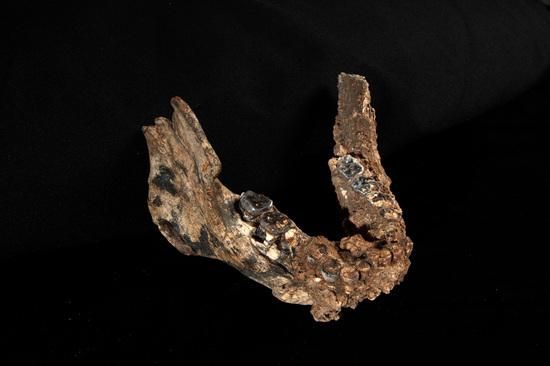Multiple Species of Early Homo Lived in Africa
New fossils unearthed in Kenya confirm that at least two species of Homo co-existed in Africa two million years ago
/https://tf-cmsv2-smithsonianmag-media.s3.amazonaws.com/filer/7b/53/7b533ee7-e9e5-4fcc-b0cb-96b60108c9d4/picresized_1344381118_02_leakey_3906b_cvr_fred_spoor.jpg)
In March, I compiled a list of my top ten hominid fantasy finds. Item number six: more Homo habilis and Homo rudolfensis fossils. The two species are the oldest members of the genus Homo. H. habilis lived roughly 2.4 million to 1.4 million years ago while H. rudolfensis lived about 2 million years ago. But where some scientists see two contemporaneous species, others recognize just one. These researchers say the fossils of H. rudolfensis may simply represent physical variation within the H. habilis species due to differences based on geography or sex. It’s a hard question to answer as there’s only really one good H. rudolfensis fossil.
But as it turns out, fantasies really can come true: A team of researchers announced today in Nature that they’ve dug up three new fossils that match the lone H. rudolfensis specimen. The new finds confirm that at least two species of Homo lived in Africa 2 million years ago.
In the 1960s, Louis and Mary Leakey discovered the species H. habilis while working at Tanzania’s Olduvai Gorge. In 1972, Bernard Ngeneo, a member of a team led by the Leakeys’ son Richard, discovered a 2-million-year-old skull lacking a lower jaw at Kenya’s Koobi Fora site near Lake Turkana. The skull, known as KNM-ER 1470, sort of looked like H. habilis, but was different in several key ways, such as being much bigger with a flatter face. Some anthropologists suggested the skull belonged to a male H. habilis and that’s why it was bigger. Other researchers said the differences were too great to be explained by sex, and they gave the skull the name H. rudolfensis because Lake Turkana was once known was Lake Rudolf.
The three new fossils also come from Koobi Fora, dating to 1.78 million to 1.95 million years ago. They also have a connection to the Leakeys. Meave Leakey, a paleontologist at the Turkana Basin Institute, is married to Richard Leakey, and Louise Leakey, Meave and Richard’s daughter, led the team that made the discoveries.
The fossil KNM-ER 62000 is the face of a juvenile. Although much smaller than the KNM-ER 1470 skull, both fossils share the same shape and features. The researchers say this is evidence that H. rudolfensis was a separate species rather than being the male version of H. habilis. The other two fossil finds are of lower jaws, which seem to match the shape of the upper jaws of KNM-ER 1470 and KNM-ER 62000. This further suggests that H. rudolfensis is indeed a separate species because the new jaws are much different from known H. habilis jaws: They are shorter and more rectangular.

The team doesn’t outright say that the new fossils plus KMN-ER 1470 should officially be called H. rudolfensis. They’re cautious because of a fossil lower jaw from Olduvai Gorge called OH 7. OH 7 is the type specimen of H. habilis—in other words, it’s the fossil that scientists use to define the species. But the fossil is very distorted. If scientists were to reanalyze the jaw and discover it actually belongs in the same species as the newly found jaws, then by the rules of taxonomy, researchers would have to call that species H. habilis. And then the species we now call H. habilis would need a new name. (Let’s hope that doesn’t happen because it would be very confusing.)
Regardless of what the fossils are called, scientists now have much better evidence that two species of Homo lived in Africa at the beginning of the Pleistocene. That number grew to three species with the emergence of Homo erectus 1.89 million years ago. Now there are new questions to ponder. Were H. habilis and H. rudolfensis both dead ends? Did H. erectus descend from one of these species or a currently unknown member of Homo?
It looks like I have some new stuff to add to my list of hominid fantasy finds for next year.
/https://tf-cmsv2-smithsonianmag-media.s3.amazonaws.com/accounts/headshot/science-erin-wyman-240.jpg)
/https://tf-cmsv2-smithsonianmag-media.s3.amazonaws.com/accounts/headshot/science-erin-wyman-240.jpg)